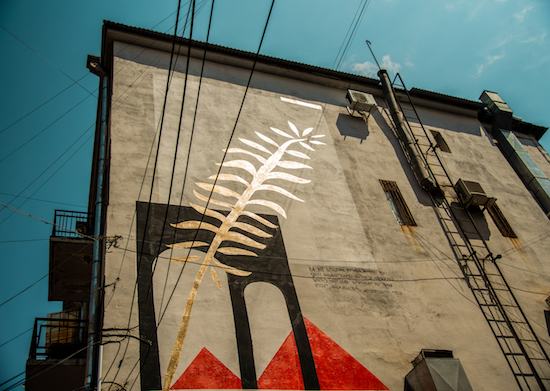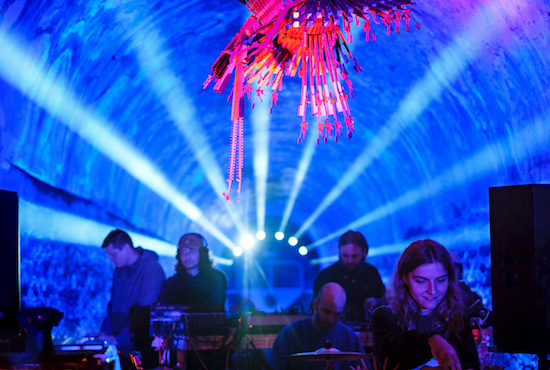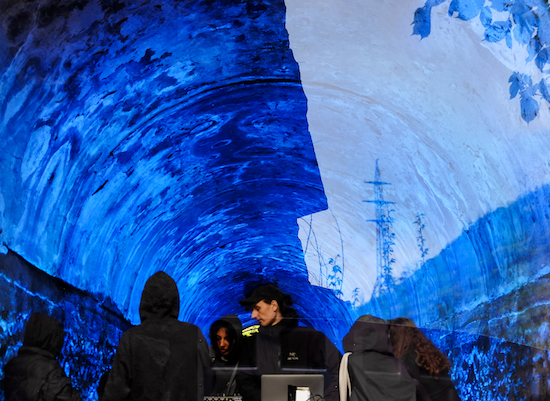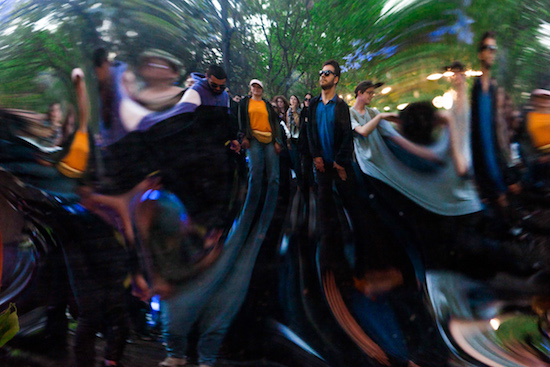"The impression is that history had no beginning in Armenia—it has always existed. In the course of its eternity, it has hallowed every stone, every foot of ground. There is probably no village that was not, in days of old, the capital of an ancient state, no hill around which a decisive battle has not raged, no stone not moistened with blood, and no man to whom this is a matter of indifference."
This passage from Andrei Bitov’s A Captive Of The Caucasus, written in 1962, still serves as one of the key points to learn for anyone travelling to Armenia. Yerevan, its capital, is one of the most ancient cities in the world, founded around the fortress of Erebuni that dates back to 782 BC. At the same time, although Armenians feel proud of their heritage, it is being destroyed before their very eyes, tells me the organiser of Urvakan festival Nairi Simonyan.
“You go to such places as Dilijan Composers’ Creativity House [Dmitri Shostakovich and Benjamin Britten had once stayed there], or Yerevan Children’s Railway—and you see ghosts, you see life that was there and that’s not there anymore”, says Nairi while we’re talking during the last day of the festival. Held for the first time this year, Urvakan is an attempt to draw attention to the state of such places. That’s where the name—"ghost" in Armenian—comes from.
Another Urvakan’s mission is to give space to musicians who play raw, oppositionally experimental music, usually performing in friends’ flats or small venues. Nairi calls them "bastard musicians" and thinks they can give birth to something new. There are specifically lots of Russian acts—that’s because Nairi has been living in Moscow, organising there a festival of "inventive music and music inventions" called Synthposium. Also, he tells me it’s important for him that such festivals create new job opportunities in the regions.
Spirits Of The Future
The ghost theme adds some mythological dimension to my trip. Are these dogs, running and barking at my early morning taxi from the airport, gornapshtikners, i.e. evil spirits in forms of animals scaring passerby and returning to graves by dawn? Or maybe they are aralezes—flying dogs licking the wounds of dead heroes, so they could relive or resurrect? In this case, a war took place, and I should’ve already been dead.
Right before the opening concert in the architecturally impressive Aram Khachaturian Concert Hall some Armenian-speaking men in front of me start singing in quiet Russian: "A rifle means festivity, and everything is fucked!". That’s a refrain from ‘Vintovka Eto Prazdnik!’, a song by a legendary Russian punk band Grazhdanskaya Oborona. Its leader’s Yegor Letov’s brother, Sergey Letov, is one of the performers in a play Topography Of Phantom Cities, prepared specifically for the festival. Musicians are using the graphic notation based on Yerevan’s general plan, as it’s represented on architect’s Alexander Tamanian monument.
Led by Hmot, who is standing in front of the stage with a mixing console, this half-improvisational piece has lots of beautiful beginnings, e.g. when Lusia Kazaryan-Topchyan and Vardan Harutyunyan, responsible for electronics, interrupt Letov’s saxophone with beats, or when Letov and tar player Miqayel Voskanyan are toying with the same melodies. But all in all it fails to deliver something solid, in the worst moments collapsing into simple mush, when performers are seemingly not sure what to do. Sote, who’s next, on the contrary, exudes confidence. He’s here with his Sacred Horror In Design program, performed alongside santoor player Arash Bolouri, Behrouz Pashaei on setar and Tarik Barri’s visuals. Blissful solos are met by applause, Sote’s electronics can provoke associations with pouring lava, and although the program was premiered in 2017, the Persian ghosts it revitalises are still likely to be coming from the future.
During all three days the night program takes place at Mirzoyan Photobook Library where concerts and parties happen regularly. Gost Zvuk label’s musicians are in charge of the Gallery stage. For the umpteenth time I witness Vtgnike being not only a great producer but also a masterful DJ. People are very fondly responding to African vocal samples in tracks like Cos-Ber-Zam’s ‘Ne Noya (Daphni Mix)’.

The Flood
Children’s railways were built in the USSR as the real functioning narrow-gauge railroads, where kids could try out such jobs as dispatchers, conductors and operators. The Yerevan Children’s Railway, the main festival location, was open in 1937. Its initiator was allegedly murdered, and its main architect was sent into exile. That surely didn’t happen because something was wrong with their work—it was just the time of The Great Purge. In the 1980s the railway became disused because of another tough period in the country’s history. Restored just a few years ago, now it’s operating more as an attraction and a place to stroll around.
Getting here for the first time, I can’t enjoy the experience in full because of the endless rain. Fortunately, there’s a place to hide under the roof of 360° Kayaran stage that occupies the Airenik station. Armenian experimentator nystagmus’s thudding beat makes it impossible not to start imagining some phantom train, although when he starts emphasising bass there are no thoughts left—the sound is so intense I feel my eyesight being refracted. It is good that the station’s stained-glass windows survive.
Other festival goers use graffiti-splattered passenger cars as their shelters from ruthless nature, listening to the Razdan river’s loud flow. Sinking in mud, I’m watching two duos on Dambaran stage—Jrimurmur, the locals, and Leto v Gorode from Rostov-on-Don. Both bands’ genres can be characterised as synthwave, but the Armenian women explore its dark side, while the Russian men give much warmer feeling. Then I decide to come back to the hotel to change socks. As I return, I visit the most picturesque stage called Tunel. It’s literally a prop tunnel with a train glowing in distance thanks to the light installation. Margenrot’s dark ambient darting off in the noise direction feels strangely movable—seems this train is ready to leave any moment.
Ukranian John Object is fiercely deconstructing everything, from club music to Beyoncé. After such a heavy day some good dance is vital. Zuli’s DJ set, based on jungle, hip hop and footwork, is received with enthusiasm. The play of light reflects dancers’ figures on trees—after sunset everyone turns to shadows.

Spooky Belgians
The weirdest thing is the timetable. It’s clear that the shower rain messes up the schedule—regardless, there are a lot of other unannounced last-minute changes. Only a few days after the festival I learn from the organisers that Pavel Milyakov’s live, that was supposed to happen in Mirzoyan library during the second day’s night program, was cancelled because of his illness. On the third day which is luckily sunny lots of things also go unplanned.
Perhaps time just goes differently for Urvakan. All these shifts give some charmingly anarchic feeling to the festival. One mad-eyed visitor runs up to me asking when Elektricheskaya Sobaka is going to play. I hope he gets to see them in time, as their jazz noise improvisation is totally worth getting lost in.
The same goes for Vardan Harutyunyan. I often find musicians who take part at experimental festivals working more like scientists—they seek some really interesting solutions, but can’t hold the full attention of the audience during the show, so it gets boring after about twenty minutes. On Urvakan, many artists’ techniques are not that spectacular, but if you yourself immerse into performances, you generally feel rewarded. I don’t know if there were some special thematic programs prepared, but I can definitely hear the wheel of the train in Harutunyan’s minimal hypnotic beats, as well the smoke pouring out. In our railway trip, I’d call him The Railroad Stoker.
KP Transmission‘s concert seems to be more connected with the tunnel itself. Dub and trip hop rhythms are punctuated as the abrasive noise, gentle dubstep motif breaks down with humming bass. After checking out what’s going on the other stages I return to Tunel right in time for the unexpected culmination of the festival.
Why The Eye? are an anonymous four-piece from Brussels. In rare interviews, they say things like, "No one in our band has an earlobe". Hiding behind the masks, they appear with their self-made instruments (for instance, they bicycle frames into mbiras) in the middle of the crowd. Their only self-titled album doesn’t transmit the feeling one gets from their tribal concert, especially refreshing after a weekend of minimalistic electronic sets. They interact with the audience not just asking people to light their instruments with phones’ flashlights, but also passing the microphone to someone who immediately starts singing in Armenian. Everyone jumps like crazy, but at 12:25am the soundsystem suddenly drops out. Someone says: “Police!”—the reaction of the audience is a mixture of dismay and joyfulness. For the next five minutes, in a moment of unity everyone’s clapping in time with the band knocking on their instruments.

Epilogue: Клуб’s showcase
Urvakan has many faces. You always have to choose during festivals, and I miss lots of reportedly amazing electroacoustic/experimental gigs on Kayaran stage, as well as danceable DJ sets on Vagon Stage and Dambaran Stage. Checking the latter, I catch glimpses of Tommy Cash ("Pussy, money, weed, pussy, money, weed / My reality is sweet, better than your dream") and Simple Symmetry’s Voodoo Your Ex—this Moscow duo always knows how to make you move, as well as Lipelis who’s playing after them.
One of the best places for partying on Urvakan is Underground Stage in Mirzoyan library. Such gloomy, fittingly claustrophobic basements are designed for hard electronic music being played there. During the first night, Manfredas from Lithuania starts his set with some perfect EBM/synthwave. Triglau’s polyrhythmic techno makes the place sweaty on the second night. After them Cast Coverts, who played at Boiler Room Yerevan as well as Unsound Yerevan, stuns dancers with the cascade of beats.
If anything can make you dance after three almost sober festival days, then it must be fast. Клуб’s showcase starts with Chronic Preview’s trippy Middle Eastern-influenced set, then Lisa Smirnova entertains the audience with a variety of beats and genres. At 3am Sasha Tsereteli, Клуб’s owner, appears in the booth in club’s T-shirt, giving the dancefloor a second breath with the tracks like Schacke’s ’Trained To The Floor’ and Dynamo City’s ’One Night In Hackney’. At 4:30, he asks the audio engineer, “Is that all? May I play one more track?” I leave at 5:30, and he’s still behind the decks.
“Perhaps it is time to open the windows and clear away the soupy staleness with a ventilating blast of otherness and newness. A gust of youthful energy to chase away the ghosts for good.” That’s how Simon Reynolds ends his reviews on albums by Baron Mordant and The Caretaker in this month’s The Wire. Indisputable, but perhaps this energy can be still found in ghosts from some musically undiscovered parts of the world? Although the first Urvakan feels more like a draft, it definitely helps certain kind of artists to present themselves to the audience in an absolutely astonishing setting—and then to keep on looking for something truly otherworldly.


